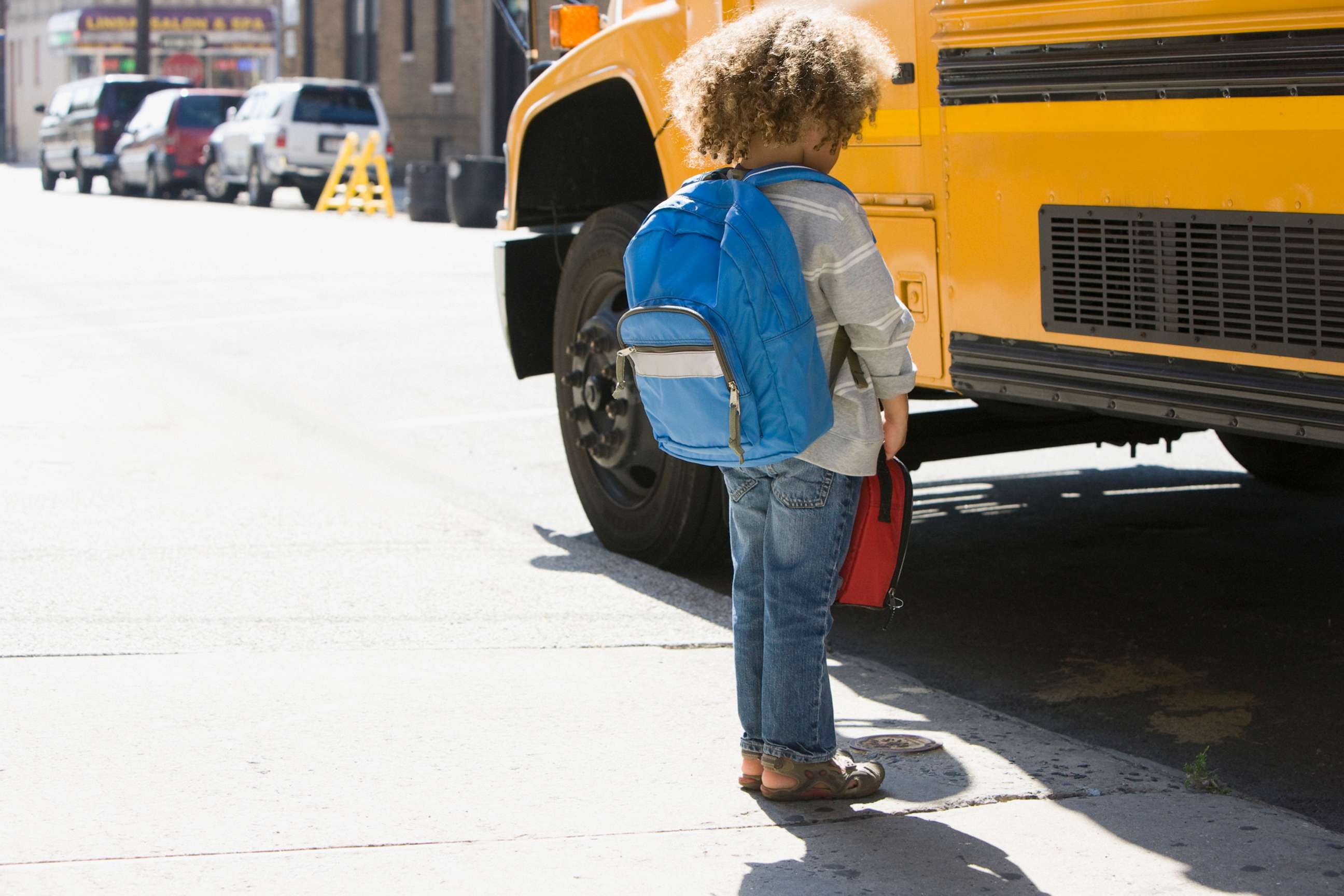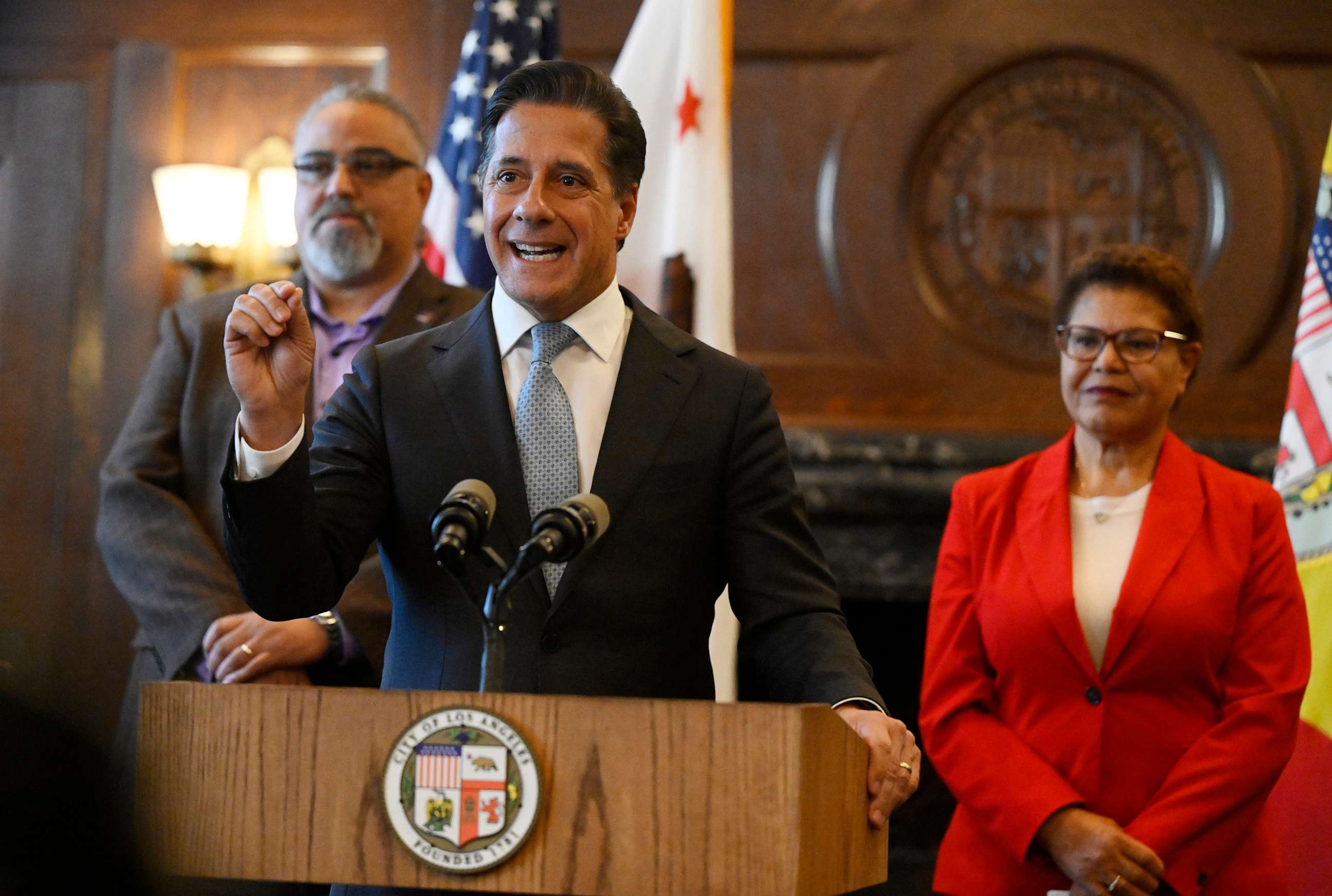Students are chronically absent across the country. COVID seems to have made it worse.
Experts say solutions have to include the community and hands-on involvement.
Kimberly Dukes is up as early as 4 o'clock some mornings, driving around Atlanta in her Ford Expedition, knocking on families' doors.
The executive director of the local group Atlanta Thrive, better known as "Momma Dukes," said she takes as much time as she can searching for chronically absent students while working to make sure more kids get to school -- and getting to know what keeps them away.
"I have a mom whose baby missed 80 days one year [amid the COVID-19 pandemic]," Dukes, a mother of 10 and local education activist, told ABC News. "What I learned from this mama is she had a chronic illness. There was a reason why she could not get him there. Some mornings she gets him there at 11 o'clock and he only goes twice a week."
"Once I built that relationship, I understood it," Dukes said.

From kindergarteners to high school seniors, chronic absenteeism persists around the country, fueled in part by disruptions from the spread of COVID-19 in the last three years, government data shows. In some places, repeated absences are getting much worse.
"There's a lot of different factors that contribute to absenteeism in a normal year and they're all put on steroids with the pandemic," said one expert, FutureEd Associate Director Phyllis Jordan.
The National Center for Education Statistics (NCES) found that chronic absenteeism -- defined as missing at least 10% of the school year -- has increased from the impact of the COVID-19 pandemic, including nearly 40% of schools reporting a spike in chronic absenteeism from the 2021 and 2022 school years. (NCES did not specify its absences to include quarantining.)
Chronic absenteeism also was not tracked by NCES prior to the pandemic. But outside analysis also points to a notable increase from before COVID-19.
According to a report released this year by researchers from the Universities of Tennessee and California and Attendance Works, a nonprofit focused on addressing absenteeism, one in six students were chronically absent in the 2018-2019 school year.
Now, however, the report indicates chronic absenteeism has doubled to nearly one in three students.
"The pandemic really, really, broke down connections and relationships between kids and schools," said Hedy Chang, the CEO of Attendance Works.

By the numbers
In 2021, the School Pulse Panel was initiated by the Biden administration: In order to determine who had been struggling with pandemic-era challenges since 2020 school closures, the Department of Education and Institute of Education Sciences (IES) collected information to better understand the impact of the virus on students and educators.
The survey collected information from a national sample of elementary, middle, high and combined-grade public schools, focused on region, locale, minority and poverty levels. It did not report out estimates by individual grades or race/ethnicity.
The School Pulse Panel asked how chronic absenteeism had changed at school, and the majority of schools with 75% or more minority enrollment indicated that chronic student absenteeism had increased "a lot" as compared to before the pandemic. (NCES did not provide boundaries for "a lot." The schools' responses were up to their interpretation, a spokesperson said.)
Roughly six in 10 West Coast schools saw chronic absenteeism increase "a lot" compared to before the pandemic. More than half of city schools also said chronic absenteeism increased "a lot" between pre-pandemic levels and 2022.

In California, the country's largest state and home to its second-largest public school district, the number of students who were chronically absent more than doubled between 2018-2019 and 2022, according to Chang.
On the other side of the country, in Washington, D.C., chronic absenteeism saw a 17% increase between the 2021 and 2022 school years, according to data released by D.C.'s Office of the State Superintendent of Education (OSSE).
But the district said that uptick was driven primarily by increases in excused absences, while unexcused absences increased only "modestly." Still, nearly half of D.C.'s students were chronically absent in 2022.
How family struggles interfere with stable schooling
Experts suggested to ABC News that there are many factors fueling the increase in absences, from the broader chaos and confusion touched off by the pandemic to more specific concerns about fighting and bullying, among other challenges.
The 2022 Delaware teacher of the year, Jahsha Tabron, said she worries behavioral problems exacerbated by pandemic school closures -- a policy trade-off to prevent infections and death -- have since contributed to the rise in excessive truancy.
"We have students who are really struggling socially because they've only been around their family group for this time," said Tabron, the dean of students at Brandywine High School and former special education teacher.
"Then you have students who are significantly struggling with social anxiety and other behavioral issues that are really sparked by the idea of being in this building with all of these personalities," she said. "And we don't really have supports in place for that, because ideally you should be able to come to school and not worry about that."
Tabron said some students go months without coming to class because of their home atmosphere. When her school opened after the 2022 winter break, there were kids who came back for the first time since last November, she said.
"When a family is struggling and they are between homes, in between jobs, they're living where they can live," she said.
"A lot of times we don't see students, and the next time that we do see them is when a parent has a stable situation where they can say, 'OK, let me take my child to school.'"
Los Angeles mom Graciela Gonzalez has seen another kind of bad habit form with her own son, Ronaldino, a sophomore at Los Angeles Unified School District's (LAUSD) Manual Arts High School.

When her son kept skipping school earlier this year, Gonzalez said, she would drive him through the streets of L.A. to show him people without homes, suggesting he needed to change his behavior for the betterment of his future.
The teen wasn't like this before the pandemic began, his mother said.
"He would look for a lot of excuses [after schools reopened]," Gonzalez said. "He would tell me 'I don't have clothes,'... [then] he would tell me, 'No, I'm tired."
Chang's organization places absenteeism into four buckets: barriers, aversions, disengagement and misconceptions. Barriers, including lack of transportation or unstable housing, come from the students' community. Aversions are barriers, like bullying, that push students out of school. Disengagement happens when school activities or personnel have difficulty reaching or "pulling" students in.
Misconceptions suggest some families believe excused absences "matter" less because unexcused absences come with consequences, Chang explained. But there are other kinds of misconceptions about schooling.
"When you think about our youngest learners, historically, you've had higher levels of kindergarten absenteeism -- it's not nearly at the levels that we're seeing now -- and some of that has to do with families not seeing that kindergarten, you know, it's not necessarily that essential," Chang said.
Efforts to improve attendance
The LAUSD superintendent, Alberto Carvalho, has set out to change his city's chronic absenteeism rate by knocking on doors and strategizing with members of his team. At the end of the 2021-2022 school year, the rate of absenteeism in L.A. schools was at 45.2%, according to data found through a public records request.
Carvalho has spent the last year attempting to connect with the students, he told ABC News, but many in his district, like Graciela Gonzalez' son, are simply staying at home.
"We were speaking to [Gonzalez] assuming that the child may be in school. The mom told me, 'He's upstairs sleeping,'" Carvalho said. That was an easy enough fix, he said: "We had somebody who drove him to school that day."
36% of Carvalho's students are still chronically absent as of March, 2023. Despite the district's near 10% increase in attendance, Carvalho is not satisfied.
"These were the kids who were in crisis prior to the pandemic to begin with and can ill afford to be absent from school," he said.
Absenteeism can concern districts of all sizes. A portion of David Schilling's northern Vermont high school students were chronically absent during the pandemic, too, he said.

"Kids would disappear, definitely, for days at a time," Schilling told ABC News, adding, "So what it seemed to me was not only did we have to do something about getting kids back into the building, but we had to make the building a place where they wanted to be."
The former principal stepped down as head of Danville School -- a PK-12 institution with under 400 students -- to implement an attendance improvement blueprint that matched the learning needs of his students called Danville Works, which includes experiential programs such as work-based internships, community-based classes and outdoor learning labs.

The programs, open to all students, include a few chronically absent kids who missed 12-30% of school last year. So far this year, according to Schilling, some of those kids have perfect attendance.
"Let's try to actually listen to what they want school to be and see what happens," Schilling said. "That's the magic for me. It was just listening to them."
In Jefferson County, Kentucky, Dr. Tish Brookins, a certified school social worker, said the issue of absenteeism has only grown over the last year, where the latest data suggests nearly a third of the county's students remain regularly out of class.
She said the reason why "runs the gamut."

Most of her cases are in low-income families and those still learning English, she said. She has team meetings with relatives and also visits their homes to address lagging attendance.
"We're all at the table, even a mental health practitioner, a nurse may be at that meeting and possibly an outside agency that provides mental health support," Brookins said. "And we're at that table saying, 'Hey, what can we do to support you and your family?'"
This year, in D.C., OSSE says it is tackling its absenteeism problem differently. The district's 60-40 rule considers a student present if they attend at least 60% of the school day. Superintendent Dr. Christina Grant hopes these adopted changes encourage kids to attend school even if they are late.
Community building
However, experts like Chang believe schools aren't the only ones responsible for showing up for students. She stressed that community relationships can also improve attendance.
"The relationship building is the most essential component," she said. "The question is, how do you organize schools so they ensure meaningful relationship-building between school staff or ... community partners and other folks who can support that relationship building?"
Without solving other issues in the community first, Brookins, too, is skeptical of reducing the absenteeism levels. She said they go "hand in hand."
"It's going to take the whole community to solve poverty and food deserts and transportation issues," she said.

Momma Dukes, in Atlanta, said empowering parents whose children attend struggling schools is a "lifestyle" for her.
She started knocking on doors with Atlanta Thrive to fill the gaps between schools and families, she said, but believes that if districts don't start accepting help from community organizers then the problem won't end.
The problem now is a mind-set that says otherwise: "We're never going to get the kids into the building because it's a culture issue," she said, "We don't want to do it together, so we'll never know what's going on. We'll never understand why kids are not showing up."
Right now, she said, "we're not working in partnership."
"If you allow us to be that bridge, the school system wins," Dukes said, "and the kids win."
ABC News' Sophia Lama contributed to this report.
Editor's note: This story had been updated to clarify references to some of the statistics cited.




